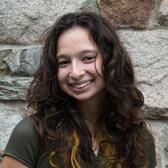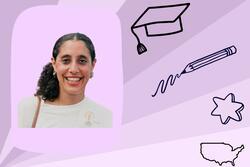Confronting Elitism at My Future Elite College
Like many graduating high schoolers, I’ve worked hard over the past four years to get into a good college. I’d kept all As through high school, even with 14 AP classes. I got a 36 on my ACT. I was involved in so many different clubs and classes. And luckily, it paid off - on December 15, 2022, I opened my acceptance letter to Yale University. I was a bulldog! I was so excited to go I committed almost immediately.
Of course, no institution is perfect, and with the debate on affirmative action drawing parallels to Jewish quotas in the 1920s and 30s, I have since thought a lot about my future school and the rest of the Ivy League’s history with diversity and inclusion - and specifically, that history’s relation to particular parts of my identity. I am beyond excited to start at Yale, but understanding its history as a bastion of exclusion and elitism and its successes and failures at addressing inequality have been paramount in shaping my opinions towards this new chapter in my life.
Jewish people have, historically, had a rather complicated relationship with the Ivy League. Many of the Ivy League’s selective policies, such as the idea of legacy admissions, were actually formed, in part, to keep Jews out of the Ivy League. Famously, Richard Feynman, Nobel Prize winning physicist, was rejected from Columbia in part because he was Jewish. Now, however, Jewish students are significantly overrepresented in elite schools, especially at Brown, Penn, and Columbia. Of these school’s various attempts at increasing diversity of all kinds over the past half century, religious diversification—and especially the inclusion of Jews— has been almost completely successful. In part, I believe this is due to the overall assimilation of American Jewish families into the upper middle class. Jews are one of the highest earning religious groups, and education tends to be associated with both wealth and class. As Jews associated with the upper middle class, the kind of educational opportunities associated with the elite became more common. On my Yale tour, stopping by Yale’s Slifka Center for Jewish life, I felt incredibly excited for religious life in college. However, it wasn’t the only thing that made an impression on me.
On my tour, we stopped at the Women’s Table, a sculpture designed by Maya Lin, which traces the number of women studying at Yale by year. There’s a significant spike in 1969, when women were first admitted into Yale College. That number reminds me that my grandmothers wouldn’t have been afforded the opportunity of a Yale College education like I have been. And furthermore, it took until 1995 until women barely outnumbered men in the freshman class. There are still significant problems with the number of women as faculty and tenured professors, however. Though newly hired ladder (or tenure-track) faculty is about equal with the number of men and women, men still outnumber women in the number of ladder faculty. However, the integration of women has been quite successful overall at elite schools. Though there are still problems with sexism on campus, demographically, colleges have done quite well.
However, there are parts of my identity that are not well represented on campus, even as Yale and other elite schools have tried to better their diversity and inclusion efforts. As I was discussing this piece with Diana Myers, a Harvard alumna and the current Rising Voices Fellowship assistant, she told me that often, at these schools, “when you’re not from the Northeast, they don’t really know what to do with you.” I’m pretty distinctly not from the Northeast! As someone from Arkansas, I’m unfortunately familiar with the underrepresentation of Southern students at schools like this. While I was visiting Yale, I was being constantly reminded that I was the “first person from Arkansas” that many people had ever met. If you look at the demographics of the Yale Class of 2026, you’ll notice that about 12% of the freshman class came from the Southeast. The Southeast has a population of around 97 million, and the US has a population of about 330 million, making about 30% of the US population from the Southeast. 12% versus 30% - that’s a huge gap! You can feel it there, too. When I visited, one of the community service leaders commented that “everyone from Arkansas knows each other,” and every time I met another Arkansan, there was indeed palpable mutual excitement. It will definitely be quite an adjustment to go from everyone I know being from Arkansas to living and learning alongside almost nobody from the Southeast.
Furthermore, there is still a significant gap in public and privately educated students at Yale. The percentage of publicly educated students has stayed relatively consistent through the years, hovering at around 60%. Comparatively, about 90% of students attend public schools in the United States. I go to a public school - in fact, in the area of Arkansas I live in, there are so few private school students that it renders private schools almost obsolete. College will be the first time in my life I’m really exposed to students from private schools en masse, and despite steps being taken to ensure class diversity in the Ivy League, there are significantly more private school students than public school students. It will be interesting to better understand the differences in educational resources and be more integrated in the lives of people with backgrounds so different from my own.
I have, however, had considerable advantages in applying to Yale that may not be as apparent. Though my school is public, we regularly have a couple of students that attend Ivy Leagues and similar schools each year. Both my parents have PhDs, and my dad went to an elite liberal arts college in the Northeast. My family’s emphasis on, and support for, me and my education have been a cornerstone in my journey, and though I definitely worked hard to get where I am, there was a significant amount of privilege on display in my own application.
The integration and failure of integration in Ivy Leagues of particular backgrounds and ethnicities is particularly interesting when you consider the relationship between diversity and status. Sociologist and Princeton professor Shamus Khan argues that, in a new era of social capital, the “new elite” compromises more women and minorities, though income differences remain apparent as the class divide continues to get sharper. This reflects much of what I have already observed through the lens of my own experience, as I evaluate the culture of the Ivy League. Considering that Southern and public school students tend to come from poorer backgrounds, this new elite still reinforces the class divide.
This piece was written as part of JWA’s Rising Voices Fellowship.







